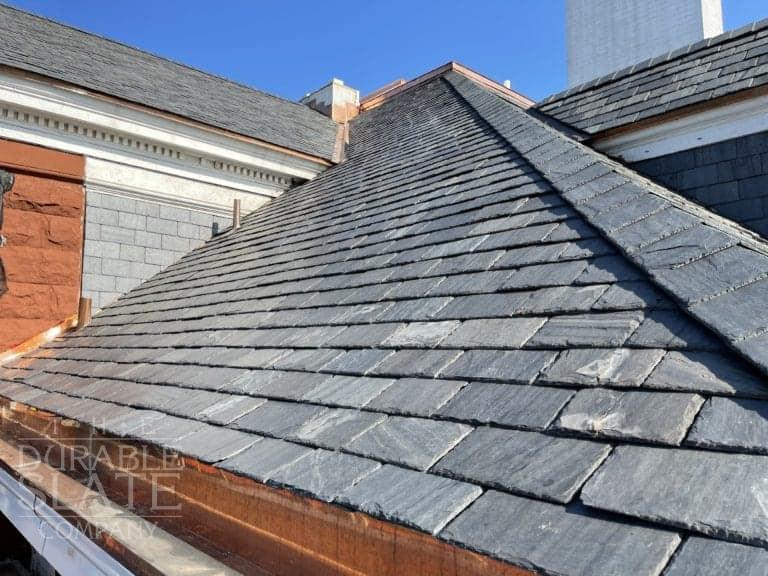A Comprehensive Take A Look At Roofing Companies Gainesville Residents Recommend
A Comprehensive Take A Look At Roofing Companies Gainesville Residents Recommend
Blog Article
Best Practices for Ensuring Correct Roof Air Flow
A balanced intake and exhaust air vent proportion, typically 1:300, plays a pivotal function, with consumption vents ideally put at the reduced side of the roof covering for cool air entrance and exhaust vents at the top for warm air departure. Keeping insulation away from vents is vital to avoid air movement constraint.
Understand Ventilation Essentials
Appropriately comprehending ventilation basics is necessary for guaranteeing the longevity and efficiency of roofing systems. Reliable ventilation alleviates wetness accumulation and temperature extremes in the attic room, both of which can cause considerable structural damage in time. A well-ventilated roof helps in protecting against typical issues such as mold development, wood rot, and ice dams, which can jeopardize the stability of the roof materials and the underlying structures.
The primary goal of air flow is to facilitate the motion of air, permitting for a regular exchange between the interior and outdoor settings. This equilibrium is attained with a combination of intake and exhaust vents that function with each other to preserve optimal airflow. Intake vents, usually located along the eaves or soffits, allow fresh air to get in the attic room space, while exhaust vents, commonly situated at or near the roofing system ridge, enable warm, damp air to get away.
Secret variables influencing the performance of roofing system ventilation include correct positioning, sufficient sizing, and guaranteeing that both consumption and exhaust vents are unblocked. Regular inspection and upkeep are critical to recognize prospective blockages, damage, or inefficiencies in the air flow system, therefore safeguarding the roof covering's performance and longevity.
Types of Roof Covering Vents
Roof vents play a crucial role in keeping effective attic air flow and, by expansion, the total wellness of the roof. Numerous types of roofing vents are offered, each with unique benefits customized to specific roof covering requirements. Ridge vents, for example, are mounted along the roofing's height, allowing warm, moist air to run away from the attic. They supply continuous air flow and blend flawlessly with the roofline, making them both efficient and aesthetically pleasing.

Soffit vents are set up under the eaves and work in tandem with roofing vents to guarantee a balanced consumption and exhaust system. By permitting cooler air to get in from below, soffit vents facilitate the expulsion of hot air via upper vents. Gable vents, located on the exterior walls of the attic room, deal an additional efficient remedy, particularly in homes with saddleback roofs.
Examine Your Existing Air Flow

Next, take into consideration the age and condition of your roofing products and ventilation elements. Older systems might not follow current building ordinance or may have worn away gradually, minimizing their effectiveness. Conduct a complete assessment to determine any indications of wear and tear, such as rust, damages, or gaps that could endanger the system's performance.
Additionally, measure the attic temperature and moisture levels. High temperature levels and moisture can indicate inadequate ventilation.
Installment Best Practices
Efficient installation of roof ventilation systems is vital for making certain optimal efficiency and durability. Proper installation begins with recognizing the particular air flow demands of the building and the roofing system it covers. This includes calculating the correct ratio of consumption to exhaust vents, typically adhering to the 1:300 policy, which stipulates one square foot of air flow for every single 300 square feet of attic flooring area.

The positioning of vents is just as vital. Intake vents must be installed at the roof covering's reduced side, often in the soffits, to enable trendy air to go into. Exhaust vents, on the other hand, must be mounted near or at the roof covering's optimal to promote the departure of cozy, damp air. This develops an all-natural air movement that helps preserve temperature level and wetness balance within the attic area.
Seal all vent connections diligently to protect against air leaks and prospective water infiltration. Usage high-grade products and adhere to manufacturer standards to make certain longevity and effectiveness. In addition, incorporating ridge vents with baffles can significantly improve airflow effectiveness by preventing wind-driven rain and snow from getting in the attic.
Eventually, accurate installment of roof covering air flow systems mitigates prospective concerns such as mold and mildew development, ice dams, and structural damages, making certain the roof covering's honesty and the building's overall wellness.
Regular Maintenance Tips
Uniformity in maintenance techniques is basic to making certain the lasting performance of roof covering ventilation systems. Normal inspections are crucial, preferably executed biannually-- in the spring and autumn. During these inspections, make certain that vents are complimentary of particles, nests, and other blockages that could hamper airflow. Look for any type of indicators of wetness buildup or mold, as these can show incorrect ventilation or leaks (gainesville roofing companies).
Make use of a soft brush or a vacuum to remove dirt and debris from consumption and exhaust vents. Be mindful not to harm the air vent screens or louvers during the my site procedure.
Proper insulation is similarly important. Make sure that attic insulation does not obstruct the vents, as this can drastically limit air flow. If any insulation has shifted or settled, see page rearrange or change it to maintain an effective barrier.
Finally, replace any damaged or missing parts quickly. Busted vents, split tiles, or deteriorated blinking can all add to poor ventilation and needs to be addressed without delay. Normal maintenance guarantees that the roof air flow system functions optimally, therefore expanding the life-span of the roofing system itself.
Conclusion
Ensuring correct roofing air flow is vital for maintaining the effectiveness and longevity of a roof. Adherence to the 1:300 intake and exhaust air vent proportion, paired with the tactical positioning of vents, is important. Regular semiannual assessments, debris cleansing, and guaranteeing insulation does not obstruct air flow are critical techniques. Applying these finest practices will certainly promote a well-ventilated roof covering system, thereby mitigating potential issues connected to moisture accumulation and too much warm, eventually prolonging the roof covering's lifespan.
A well balanced intake and exhaust vent ratio, typically 1:300, plays a crucial role, with intake vents see ideally put at the reduced edge of the roof for cool air entrance and exhaust vents at the optimal for cozy air exit. Consumption vents, usually situated along the soffits or eaves, allow fresh air to enter the attic room room, while exhaust vents, often situated at or near the roof ridge, allow hot, humid air to get away.
Soffit vents are set up under the eaves and work in tandem with roofing system vents to make certain a balanced consumption and exhaust system. By enabling cooler air to go into from below, soffit vents promote the expulsion of hot air through top vents. Adherence to the 1:300 consumption and exhaust vent ratio, coupled with the critical positioning of vents, is necessary.
Report this page